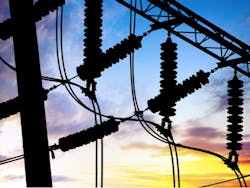New York Launches Investigation into Electric Resource Adequacy
New York has launched an investigation into its mechanism to ensure electric resource adequacy out of concern that its current approach fails to account for local reliability and environmental benefits.
The Public Service Commission voted to initiate the proceeding (CASE 19-E-0530) Thursday and now seeks comments from interested entities.
At issue is the state’s Installed Capacity (ICAP) market, run by the New York Independent System Operator. ICAP creates price signals that spark new investment in resources before power supplies fall short.
ICAP was designed around what New York hopes to make a grid of the past, one heavily dependent on large fossil fuel power plants. As it pursues goals to significantly ramp up renewables and energy storage, the commission questions whether ICAP is still an effective mechanism.
“ICAP, as currently designed, is an incomplete resource adequacy instrument because it fails to recognize and provide compensation for many important factors, such as environmental and local reliability benefits,” said the commission in the August 8 order.
New York’s future resources mix may have lower marginal costs or different availability profiles than today’s power plants, the commission said. An oudated mechanism could ultimately raise electricity rates.
So the state plans to examine the compatibility of its new mandates for renewables and energy storage with the NYISO’s electric resource adequacy mechanisms — and how to align them if they are not compatible.
In questions posed to stakeholders, the commission asks if alternative approaches should be considered, such as the state overseeing resource adequacy portfolios, as is done in California.
Another possibility is the restructuring of NYISO rules to accommodate state clean energy public policies.
“New York’s Reforming the Energy Vision strategy to create a cleaner, affordable and more resilient energy system is working,” said John Rhodes, commission chair. “We must continue to make sure that all of the state’s energy policies share a common goal to ensure clean, reliable, and affordable energy while meeting Governor Cuomo’s ambitious carbon-reduction goals.”
Gov. Cuomo in July signed into law a program to ensure that at least 70% of electricity comes from renewables by 2030. The state also is pursuing a goal to create a carbon free electricity system by 2040.
Learn more about electric resource adequacy in New York in NRDC’s two-part blog, posted in Microgrid Knowledge’s Industry Perspectives.
About the Author
Elisa Wood
Editor-in-Chief
Elisa Wood is the editor and founder of EnergyChangemakers.com. She is co-founder and former editor of Microgrid Knowledge.
